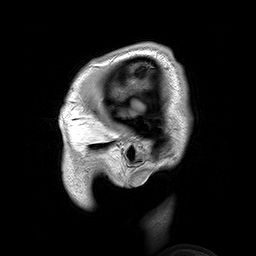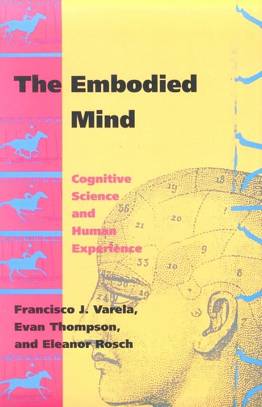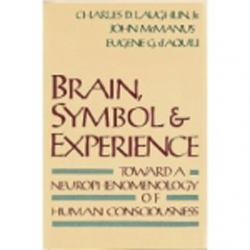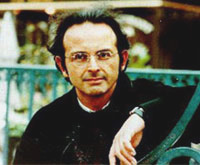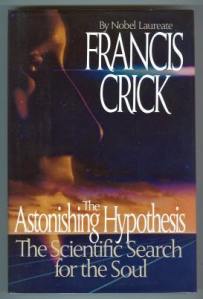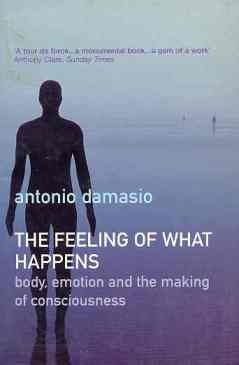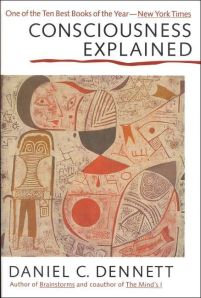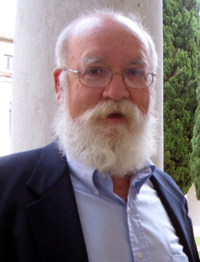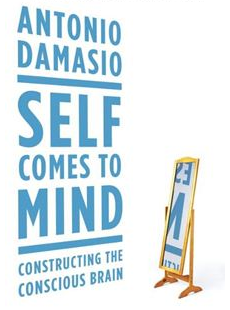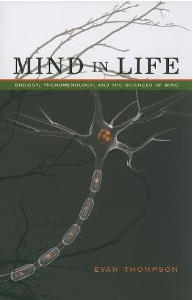(Part I is here, and part II is here)
There are a small number of researchers in neuroscience, cognitive science, and philosophy, that have developed a body of work that is properly called neurophenomenology. The most recognizable and productive was the Chilean biologist and cognitive neuroscientist Francisco Varela (1946-2001), who is likely better known for co-developing the theory of autopoesis. He was possibly the first neuroscience researcher since Erwin Straus to have found the very technical phenomenological methods developed by Husserl to be a valuable resource. Varela adopted as much of the Husserlian methdology as he saw fit, so as to make progress on the notoriously difficult problems inherent to relating cognitive neuroscience data with first-person verbal reports. Varela’s essay”The Specious Present: A Neurophenomenology of Time Consciousness” was in particular influenced by Husserlian methodology.
Collaborating with eminent categorization researcher Eleanor Rosch and the philosopher Evan Thompson, Varela in 1991 published The Embodied Mind: Cognitive Science and Human Experience. In my opinion this was the most important book on cognitive neuroscience of the 1990’s (Daniel Dennett would not agree, but has an interesting critique here where he refers to it as “a major contribution to our understanding of cognitive science”.) I believe The Embodied Mind effectively provides a foundation for neurophenomenology, and is the most important work in the field (though the term did not appear in the volume).
As far as I have been able to determine, the term neurophenomenology first appears in 1988 with anthropologist and “biogenetic structuralist” Charles Laughlin’s “The Prefrontosensorial Polarity Principle: Toward a Neurophenomenology of Intentionality“, in Biology Forum 81 (2): 243-260 (I cannot find the original article, but there are references to it). Likely many encountered the term in 1990’s Brain, Symbol & Experience: Toward a neurophenomenology of human consciousness by Charles Laughlin, social psychologist John McManus, and psychiatrist Eugene d’Aquili.
This is a fascinating book of great ambition: to model language and cultural systems of meaning through a non-reductive cognitive neuroscience. The section on existential-physiological discrepancy is worth the price of admission alone! Laughlin was kind enough to give me his perspective on this fertile period: evidently Varela likely encountered the term through this book. I for one was thrilled in1996 when Varela published “Neurophenomenology: A methodological remedy to the hard problem” in the Journal of Consciousness Studies.
Varela made a presentation to the “Towards a Science of Consciousness” conference in Tucson in April 1996. Here he delivered an address later published as “A science of consciousness as if experience mattered”. In it he defines the field:
“The Working Hypothesis of Neurophenomenology
Only a balanced and disciplined account of both the external and experiential side of an issue can make us move closer to bridging the biological mind-experiential mind gap:
Phenomenological accounts of the structure of experience and their counterparts in cognitive science relate to each through reciprocal constraints.
<snip>
The key point here is that by emphasizing a codetermination of both accounts one can explore the bridges, challenges, insights, and contradications between them. Both domains of phenomena have equal status in demanding full attention and respect for their
specificity. It is quite easy to see how scientific accounts illuminate mental experience, but the reciprocal direction, from experience towards science, is what is typically ignored.
The study of experience is not a convenient stop on our way to a real explanation, but an active participant in its own right.”
At the time of this presentation, “consciousness studies” was enjoying something of a rennaissance, and while only a small pool of researchers were explicitly refering to neurophenomenology as such, notions of “embodied cognitive science”, “situated cognition”, “hot” (as in emotional) cognition, and “affective neuroscience” were circulating among much broader group. At one time for a neuroscientist or even psychologist to admit they were researching consciousness would supposedly invite at least skepticism, but in the 1994 the famously hard-nosed reductionist and DNA researcher Francis Crick (1916-2004) worked on and advocated a neuroscientific approach to consciousness:
By advocating a cognitive neuroscience of consciousness, Crick helped to legitimize a field that had been controversial. and many computer scientists, neuroscientists, philosophers, biologists, psychologists, and even physicists became involved in a roiling, highly publicized series of debates and conferences on mind, brain, and consciousness.
One reads there had been something of a stigma placed upon brain scientists who dared to try to model consciousness or “subjectivity”; now leading neuroscientists like Gerald Edelman and Antonio Damasio write best-sellers about consciousness and emotions. Damasio in particular is arguably the leading expositor of the view that embodied emotions are a critical part of cognition, a perspective that has been long maintained by the phenomenological psychologists. He has developed the somatic marker hypothesis, which states that decision-making is affected by emotions,due to visceral signals coming from the body.
Damasio, perhaps the leading researcher in the world on consciousness, draws on the work of Varela, who died at a relatively young age in 2001. Without this charismatic neuroscientist leading the effort, it is unclear what is next for neurophenomenology. One possible, and serious, bifurcation point is present: the influential reductionist and cognitivist philosopher Daniel Dennett has made an important distinction between “upper case'” Husserlian Phenomenology and “lower case” phenomenology, the far-less controversial latter endeavor being (in his formulation) amenable to cognitive neuroscience.
Consciousness Explained is endlessly stimulating, eminently readable, funny, provocative, and most importantly provides a pragmatic account of how to move the cognitive science of consciousness forward methodologically via heterophenomenology This method may prove fruitful for neurophenomenology, but Consciousness Explained ultimately devotes it’s hundreds of fascinating pages to a defense of vanilla reductionistic computational/representational cognitivism.
Consciousness Explained proposes that verbal reports generated by the introspection of a subject can be treated as data through the adoption of a “heterophenomenological” method, where no assumptions about the reality-status of the introspection or description are made (a .pdf from The Journal of Phenomenology and Cognitive Science outlining a rather plausible defense of the heterophenomenological method is here) The upshot is that cognitive neuroscience and psychology (now, at least) have no need of trained “autophenomenologists” such as Edmund Husserl or William James. It is enough to simply get regular untrained subjects to verbally report on what they believe they are experiencing or percieving or remembering, and these reports are nothing more than data about subjects’ beliefs about their mental states. Heterophenomenology is thus a sort of behaviorist-friendly phenomenology.
Heterophenomenology attempts to get around the problem of subjectivity: the reports are simply treated as data about the subject’s beliefs or “intentional stance”, which can then be used to correlate with neuroimaging or otherwise inform model-building in the cognitive neurosciences. But Dennett maintains that there can be no “first-person” science, where descriptions of experience from the researcher are fundamental, which is what Husserl, William James, and Varela espoused (read Dennett’s crisp missive on the subject of “The Fantasy of First-Person Science” at http://ase.tufts.edu/cogstud/papers/chalmersdeb3dft.htm).
This distinction then opens up two broad possible paths for neurophenomenology: using a strictly “hetero” and third-personal methodology, or building on tradition of the “auto” and first-personal way (it should be made clear that this distinction is not only germane to neurophenomenology, but also to the broader field of consciousness studies and possibly cognitive neuroscience, psychology, and medicine). However, both may be useful, depending on context and the particular research problem of interest. The “hetero” method is more-or-less what psychologists and behavioral researchers have done for a century (the twist being how the data is to be regarded: not about reality so much as subjects’ beliefs about reality).
Varela was emphatic that phenomenology, done properly, is not introspection at all. Following Husserl, he asserted that what a disciplined, trained observer can observe and report about consciousness is vastly different than what a “civilian” can do. The neurophenomenological theory of Varela does not accept Dennett’s formulation that what he (Dennett) calls the “auto” tradition is not science. Rather, “mutual constraints” define how mind science uses the careful descriptions of trained observers or phenomenolgists relative to “objective” behavioral or cognitive neuroscience data. If such training can yield reports with accurate characterizations of the structure of phenomenal awareness, or even the underlying underlying cognitive processes, autophenomenology will be valdiated.
Before his passing in 2001, Varela produced many writings on these methodological issues, as well as other topics on the neurophenomenology, which are now circulating in book form: The View from Within (with Jonathan Shear) and the multi-authored Naturalizing Phenomenology: Issues in Contemporary Phenomenology and Cognitive Science.
Time will tell if Varela’s or Dennett’s visions of a science of consciousness prevail. While it is possible there will be a reaction against so much time and effort being devoted to these matters (as in the behaviorist disavowal of introspection used in German psychophysics research) 15 years after the mid-1990’s “consciousness boom”, interest remains strong.
Some among the talented researchers who worked with Varela are still active, among them Jean-Phillipe Lachaux, as well as Antoine Lutz , who describes his research thusly:
“I am interested in understanding the neural counterparts to subjective experience and, more generally, the mechanisms underlying mind-brain-body interactions. In the first part of my research, I am studying the role of large-scale neuronal integration (neural synchrony mechanisms) during various mental states (voluntary attention, emotion generation); The emphasis of my work is in the use of introspective, or first-person, data in order to understand the function of these large-scale dynamical processes”
Among philosophers doing neurophenomenological research, there is Shaun Gallagher, who wrote the excellent How the Body Shapes the Mind, and who is the Editor-in-Chief of the journal Phenomenology and the Cognitive Sciences. David Casacuberta has a neurophenomenology website at http://neurophenomenology.blogspot.com/.
It is worth noting that there are more academic papers and books about embodied cognition than ever. Neurophenomenology in the narrower sense is somewhat in a transitional phase after the death of Varela, and it remains to be seen whether the component sub-fields of clinical neurology, neuropsychology, experimental cognitive neuroscience, and philosophy will continue to produce an emergent field. However, there have been a number of works which are to this author stimulating and likely fertile sources of new ideas. In particular, Antonio Damasio’s 2010 Self Comes to Mind: Constructing the Conscious Brain seems as if it will usher in a new era of productive research on embodied cognition.
This work focuses on the role of visceral dynamics in the body being mapped onto the brainstem, thalamus, insular and cingulated cortices, and other regions to generate a sort of representation of the homeostatic state of the body.
Evan Thompson has recently authored a wonderful, well written tome entitled Mind in Life. It refines and even critiques some of the arguments and perspectives from the 1980’s/early 1990’s era that produced The Embodied Mind:
This has garnered high praise from no less an authority than neurodynamicist Walter Freeman:
“There is no deeper prison of the modern mind than the Cartesian legacy that splits mind from life, and no more arduous climb to escape. Thompson provides a topo map–rich, multifaceted, superbly documented–by detailing the work of the many (but relatively few among contemporary scientists and philosophers) who recognize the impasse and strive to transcend it.”
Interest in neurophenomenology is on the rise. As of mid-2009, Google lists 24,000 results under the term “neurophenomenology” . In early 2013, there are more than 34,000. As one who can remember that a browser search in 1996 produced about 3 results, a sense of excitement is likely appropriate. The knotty challenges involved in this sort of research are daunting, but more people than ever are looking at the problems. We are, perhaps, at the end of the beginning of the story of research into neurophenomenology.
